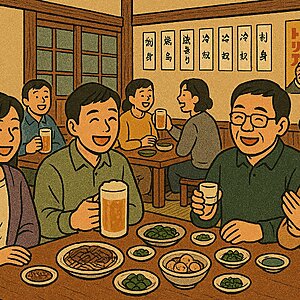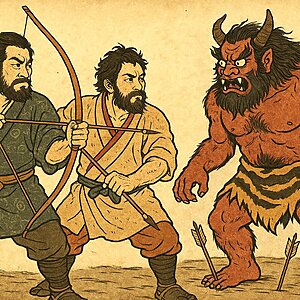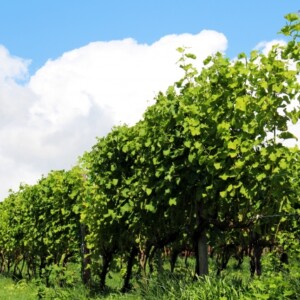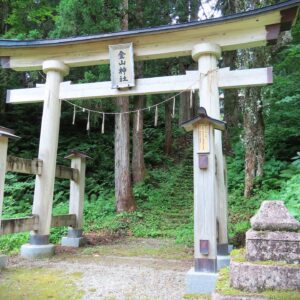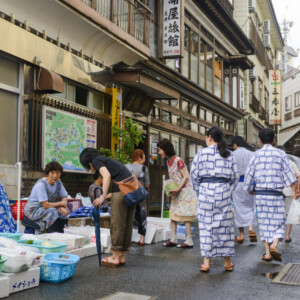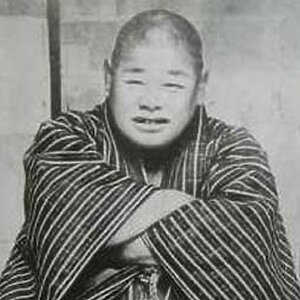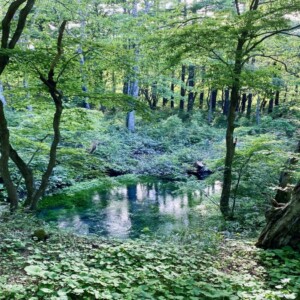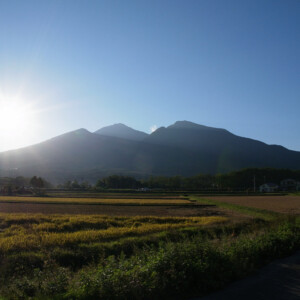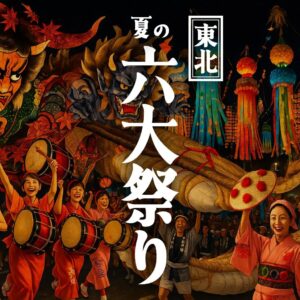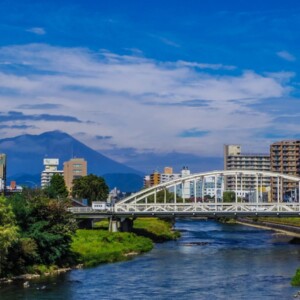
[Series ⑦: The first nine years of roles and the second three years of roles] The bond between the Genji and Togoku warriors, and the beginning of 100 years of prosperity of the Oshu Fujiwara clan
table of contents
- 1 What are the roles of the previous nine years and the latter three years (Zenkunen no Eki and Gosannen no Eki)?
- 2 What was the reason for killing the surrenderers at Kanazawa fence?
- 3 Did the three Genji brothers have a bad relationship with each other like the Kiyohara clan?
- 4 Why did the bond between Genji and the Togoku samurai deepen?
- 5 Oshu Fujiwara clan started from Kiyohira
- 6 summary
- 7 Serialization: The role of the first nine years, the role of the second three years
Minamoto no Yoshiie younger brother Yoshimitsu Minamoto joined no Yoshiie's army from Kyoto to help his brother out of his predicament
attacked the Kanazawa Stockade , which was considered to be impregnable at the time
As a result of this food attack, the provisions in the stockade ran out, and the Kei and Buei units set fire to the stockade and fled, but both the Kei and Buei were captured and beheaded, and the later three years of war were dominated by Yoshiie and Kiyohira. Allied forces win.
What are the roles of the previous nine years and the latter three years (Zenkunen no Eki and Gosannen no Eki)?

It was fought in Tohoku (Iwate Prefecture and Akita Prefecture) from 1051 (Eisho 6) to 1062 (Kohei 5) and from 1083 (Eiho 3) to 1087 (Kanji 1) at the end of the Heian period. There are two campaigns.
The War of the Nine Years was a campaign in which the Minamoto clan, dispatched by the imperial court, quelled the rebellion of the Abe clan, which was growing in power in Mutsu (Iwate Prefecture), with the help of the Kiyohara clan.
After that, an internal conflict arose in the Kiyohara clan, which had strengthened its control from Mutsu to Dewa (Akita prefecture), and the dispute over the family headship developed into a battle during the War of the Third Year, and the Minamoto clan was also here. is deeply involved.
These two campaigns led to the establishment of the Oshu Fujiwara clan in Hiraizumi, Iwate Prefecture, and the bond between the Minamoto clan and the samurai of eastern Japan deepened, leading to the establishment of the Kamakura shogunate under Minamoto no Yoritomo.
What was the reason for killing the surrenderers at Kanazawa fence?
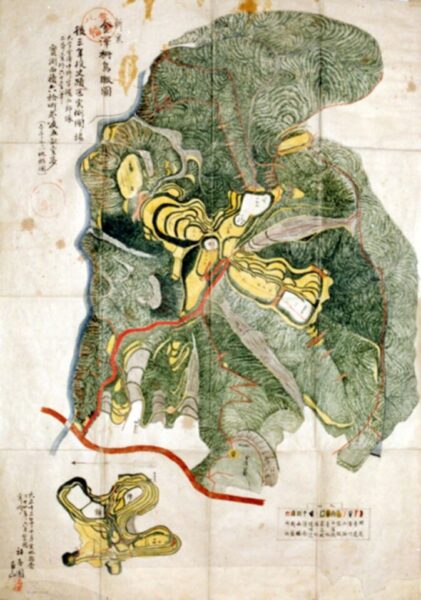
It was Yoshihiko Hidetake , who was part of the allied forces, who proposed a food raid against the Kanazawa Stockade
Yoshihiko Hidetake went to celebrate the wedding of Kiyohara Sanehira's adopted son, Naruhira, and was angered by Mae's wait for him, and threw away the gold dust he had given to her. He is the uncle of Kiyohira, who started the role.
Yoshiie protected non-combatants who surrendered, but he agreed with Hidetake Yoshitake's argument that ``to increase the effectiveness of the military supply offensive, we should not post posters,'' and some of them killed all of them and surrendered. I wanted to make sure it wasn't.
Did the three Genji brothers have a bad relationship with each other like the Kiyohara clan?
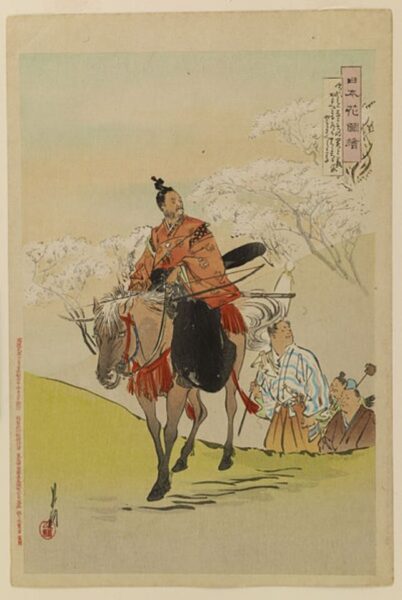
Minamoto no Yoshiie had two younger brothers, Yoshitsuna and Yoshimitsu, who had the same parents.
After the role of Gosannen, they engaged in a battle of flesh and blood involving their respective sons, and it is thought that the relationship between the brothers was as bad as the three Kiyohara brothers.
Furthermore, although Yoshiie lagged behind Yoshitsuna in the battle for promotion within the imperial court, his son Yoshikuni took root in the eastern part of Japan and became the ancestor of the Ashikaga, Nitta, and Satomi clans. .
Furthermore, just as Yoshiie celebrated his Genpuku at Iwashimizu Hachimangu Shrine, he is commonly called Hachimantaro, and Yoshitsuna and Yoshimitsu also have common names.
Yoshitsuna Kamojiro
Yoriyoshi's second son , he was given this nickname because he celebrated his New Year's wedding at Kamo Shrine in Kyoto, and it is said that he was respected by the imperial court and at one time had more power than Yoshiie, the leader.
Also, in 1094 (Kanji 8), he suppressed the rebellion of the Taira clan in Dewa as Mutsu no kami.
During the War of Nine Years, he followed his brother Yoshiie and his father Yoriyoshi, but he and Yoshiie were on bad terms, as they almost fought each other due to a dispute between their subordinates, and his son Yoshiaki was assigned as the assassin of Yoshitada, who succeeded Yoshiie. (Yoshiaki) was executed, but Yoshitsuna, enraged by this, ran away from the imperial court with his five sons and barricaded himself in Mt. Koka in Omi.
However, when all of his sons committed suicide, he surrendered, became a priest, and was exiled to Sado, but was later forgiven and returned to Kyoto.
Shinra Saburo Yoshimitsu
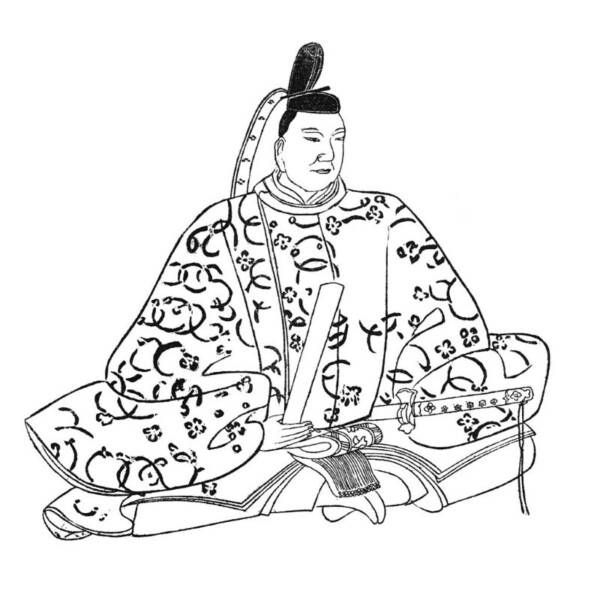
The third son, Yoshimitsu, celebrated his Genpuku ceremony at Shinra Myojin Shrine in Omi and became Shinra Saburo, and is said to have been skilled at playing archery and sho, and was a military commander in both literary and military arts. It is said that there was.
During the War of the Third Year, he learned that his older brother Yoshiie was struggling and requested to the Imperial Court that he wanted to go east to provide reinforcements, but he was not allowed to do so, so he headed to Mutsu without permission and was stripped of his government post.
He took the daughter of a powerful clan in Hitachi (Ibaraki Prefecture) as his wife and became the founder of the Satake clan, and as the shu of Kai (Yamanashi Prefecture) he became the first head of the Kai Genji (Takeda clan, etc.), as well as the Ogasawara clan. He is also the ancestor of the Nambu clan.
Yoshimitsu did not have a connection with the central government like Yoshiie and Yoshitsuna, and it is thought that he was thinking of expanding his power in the eastern region.
Why did the bond between Genji and the Togoku samurai deepen?
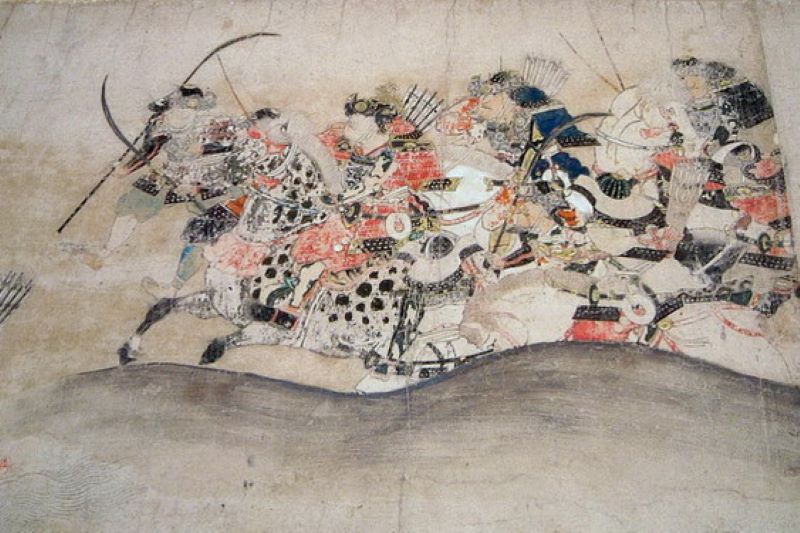
When Yoshiie returned to the capital, he reported that he had ``subdued the Ou Rebellion as the Governor of Mutsu,'' but the Imperial Court offered him a reward, stating that ``this battle was an internal conflict within the Kiyohara clan, and that Yoshiie had intervened without permission.'' In fact, he dismissed Mutsu no kami.
Furthermore, Yoshiie was ordered to pay taxes that were overdue due to the role, and Yoshiie was in trouble.
However, Yoshiie had mobilized samurai from eastern countries such as Bando for the role of the third year of war, and he had to give them a reward, so he gave the reward out of pocket money despite the hardships.
It is said that the samurai in the eastern regions who learned of this were moved by Yoshiie's actions, took his debt of gratitude into their hearts, and swore loyalty to the Genji clan.This spirit was inherited and eventually led to the Gokenin system of the Kamakura Shogunate. I'm going to go.
Oshu Fujiwara clan started from Kiyohira
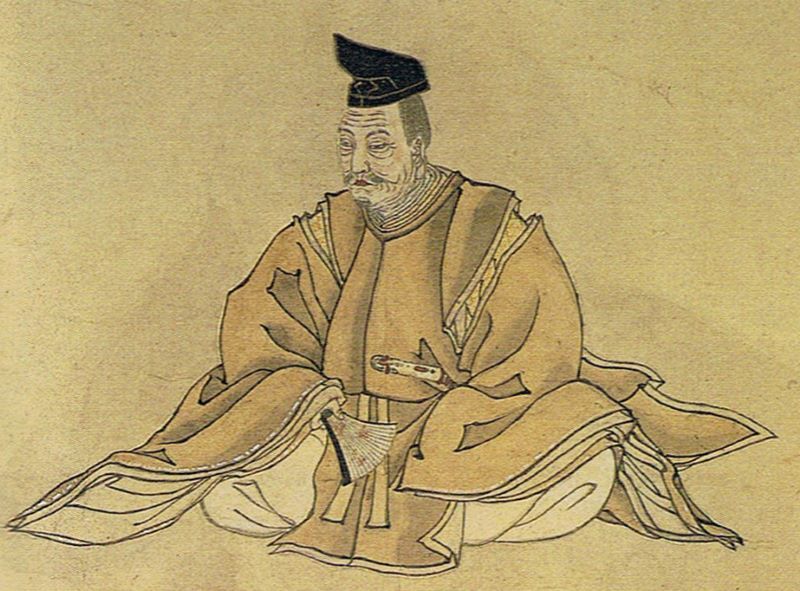
Fujiwara no Kiyohira, who expanded his influence in Dewa and Mutsu after the War of the Third Year, appealed to the imperial court as the ruler of Ou and engaged in trade with the Sung Dynasty in mainland China, and gained independence in the face of the Genpei conflict in the center. It was like a country.
Kiyohira also moved his residence to Hiraizumi (Iwate Prefecture) in the Okuroku District and built the Golden Hall of Chusonji Temple, creating a magnificent utopia centered on Buddhist culture.
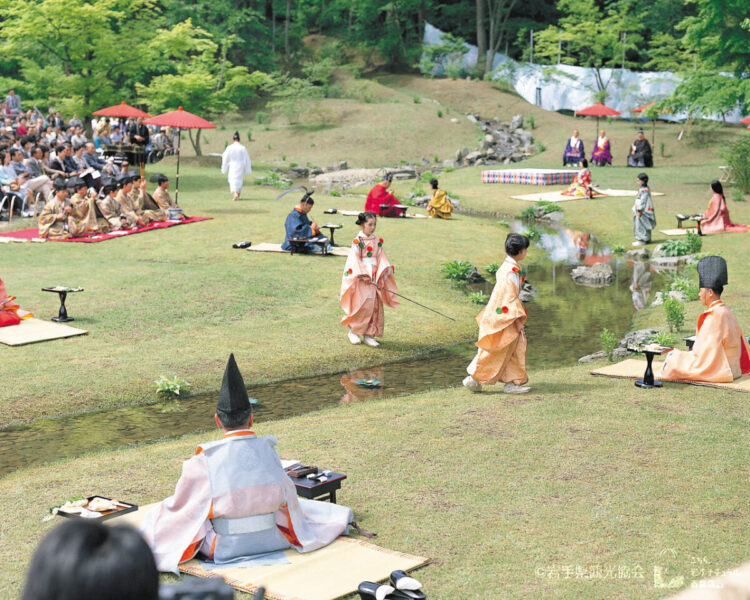
As his ties with the Kiyohara clan were severed, he returned to the Fujiwara nature of his biological father, Fujiwara no Tsunekiyo, and took on the name ``Fujiwara no Kiyohira,'' establishing the foundation for 100 years of Oshu Fujiwara clan for four generations. was built.
summary
The Minamoto clan strengthened its ties with the samurai of the eastern regions through the two campaigns of the 9th year of the first year and the 3rd year of the second year, but the imperial court feared that the power of the Minamoto clan would become too strong, so they invited the Genji group to split, weakening their power and creating the Taira clan. It will come to be used heavily.
This weakened the power of the Genji clan, but in return the power of the Taira clan increased.
However, the seeds that Genji sowed in the eastern regions gradually sprouted and eventually blossomed into the Kamakura Shogunate (complete).









![[Series ⑥: The role of the first nine years and the role of the second three years] From the internal conflict in the Kiyohara clan to the battle for the family succession, the role of the third year after it was considered a private war Three years later 1](https://jp.neft.asia/wp-content/uploads/2023/12/c0edc0a05afd06375d9f91bd4b7c9472-150x150.jpg)
![[Series ③: The role of the previous nine years and the role of the second three years] Abe's army, which boasts unparalleled strength, is forced into a predicament by Minamoto no Yoriyoshi Minamoto Yoshiie](https://jp.neft.asia/wp-content/uploads/2023/11/134a54642694b5a7a2440647a33b73be-150x150.jpg)
![[Series ④: The role of the previous nine years and the role of the second three years] Mr. Kiyohara's participation in the war completely changed the flow of the role of the previous nine years 1000310_m](https://jp.neft.asia/wp-content/uploads/2023/11/1000310_m-150x150.jpg)
![[Series ⑤: The role of the previous nine years and the role of the second three years] 20 years after the role of the previous nine years, signs of war once again spreading to Ou Minamoto Yoshiie 2](https://jp.neft.asia/wp-content/uploads/2023/11/43170603cd506225e1e986eec406b569-150x150.jpg)
![[Series ②: The role of the previous nine years and the role of the second three years] The role of the previous nine years is from the truce to the battle again, and the Kokufu army is struggling Taga Castle Ruins](https://jp.neft.asia/wp-content/uploads/2023/11/a0b8b1213124e7a13c7308fa81e053a2-150x150.jpg)
![[Series 1: The role of the previous nine years and the role of the later three years] Why did the Ou War at the end of the Heian period take place? Shiba Castle Ancient Park](https://jp.neft.asia/wp-content/uploads/2023/11/6e4e9113cd864c9d5892db200df1ec1c-150x150.jpg)
![[Fukushima Prefecture] 3 recommended hot springs in Nakadori and Hamadori, Fukushima Prefecture, selected for their secret hot springs, famous hot springs, and unique spring quality! 28350638_m](https://jp.neft.asia/wp-content/uploads/2024/01/28350638_m-150x150.jpg)
![The battle for bone flesh unfolded in Yokote Basin: "Three Years of Second Year Battle" [Akita Prefecture] 0fb6939d60ada03f05f13ef893cd6663](https://jp.neft.asia/wp-content/uploads/2023/07/0fb6939d60ada03f05f13ef893cd6663-150x150.jpg)
